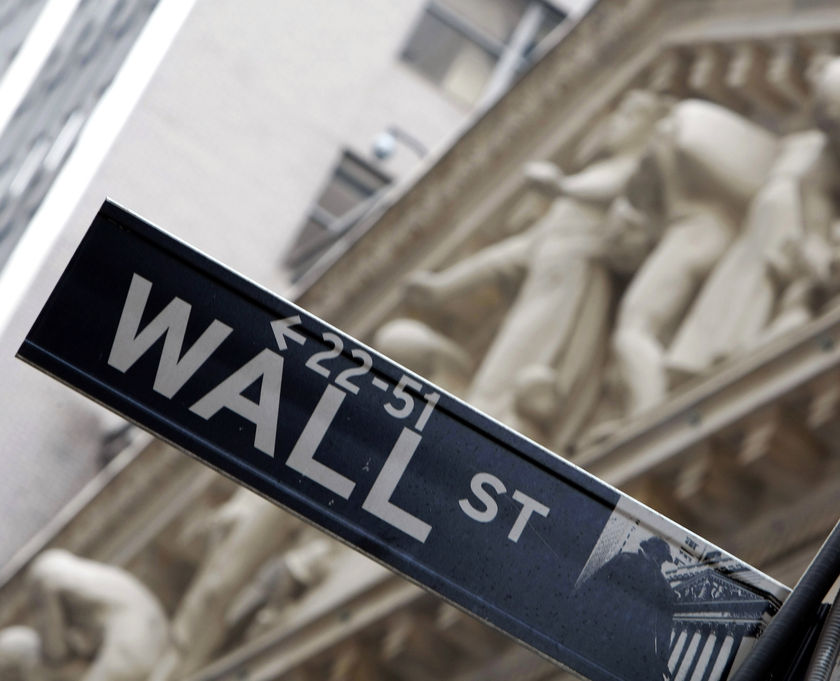This is the second part of the interview with Bill Bonner.
He founded Agora Inc. in 1979. With his friend and colleague Addison Wiggin, he co-wrote the New York Times best-selling books Financial Reckoning Day and Empire of Debt. His other works include Mobs, Messiahs and Markets (with Lila Rajiva), Dice Have No Memory, and most recently, Hormegeddon: How Too Much of a Good Thing Leads to Disaster.
In this interview Bill tells us that “We have got a lot more, a lot more nonsense coming and I think it’s going to come first from Europe where Draghi is going to come up with a lot more QE like stuff. We don’t know exactly what or when.”
Happy Reading!
Vivek Kaul
Iceland just sent its 26th banker to prison. As far as I know not a single US banker or someone from Wall Street has gone to jail. Rajat Gupta and Raj Rajaratnam have, but their cases were different. They had nothing to do with the financial crisis.
Ah! I am not sure, but as far as I know no banker specifically has been gone to jail as a result of the crisis. I don’t know what to make of it. I am hesitant to condemn the bankers.
I mean they were playing the game when in effect, they were the ones who made the rules. They bribed the politicians to make the rules and they played by those rules. Did they break the rules? I don’t know.
Why do you say that?
I have been involved in the financial industry in America for a long time. What I do know is, those rules are very tough to understand. If anybody wants to put you in jail, they can put you in jail because it’s sure that you are violating some rule somewhere. There are too many of them. So I am little bit sympathetic to the bankers in that particular aspect about being convicted of crimes. But I am not at all sympathetic to them in the broader sense because as I said they created that system. I don’t think they deserve to go to jail because I would bet those rules are pretty non-screwy. I do bet they deserve to go broke and that’s what would have happened and that’s the way the market works.
But these guys escaped…
The market doesn’t put you in jail just because you bet on the wrong banker. But the market has a way of taking care of these problems and it was on its way to taking care of these problems in a big way in 2008, when half of Wall Street was exposed to bankruptcy. Half of those institutions probably would have gone broke and half would have been broken up and sold. That would be a punishment and getting what one deserves. That to me makes sense. Instead of that, the government came in and gave these people money. It gave the people who had made such bad bets even more money to make even bigger bets and then it claimed to be enforcing the law. The wrong doers were too close. They all were too cozy there.
That’s a nice way of putting it…
So my guess is that in Iceland their financial industry did not lobby correctly. But the end of it was that the financial industry got away scot free and got away with all of their ill-gotten gains and went on to make even more money as the Fed gave them money in the terms of zero interest rate financing. So the whole thing is absolutely preposterous in every sense and offensive.
Your new book is called “Hormegeddon: How Too Much of a Good Thing Leads to Disaster.” So can you elaborate a little on the subtitle of the book, “How too Much of a Good Thing Leads to Disaster.” Why do you say that?
Well there is a famous quote in America by Mae West, who said, “Too much of a good thing is wonderful.” The thing that she was talking about might be the only thing that too much of is wonderful. But most things are like sugar. You think, well, I will have a chocolate pudding for dessert and one chocolate pudding is wonderful, two chocolate puddings is okay. By the time the third chocolate pudding comes around, you begin to say um, I am not sure about this and by the fourth you begin to feel a little sick. If you keep eating chocolate puddings, it is not going to be good for you. So that’s true of almost anything.
By the way the economists have a rule for this called the principle of declining marginal utility and it seems to apply to just about everything. No matter what you try to do or what you think.
Can you give us an example?
It applies to money. When you have no money and somebody gives you 10 dollars, that 10 dollars, each one of those dollars is very very valuable to you and if you have a million dollars and somebody gives you 10 dollars you really are not going to be impressed at all because the value of that money has declined. Each additional incremental dollar declines to the point where it is almost worth nothing. We read in the papers that multibillionaires like Zuckerberg have given away 50 billion dollars and that is such a great thing. But actually those 50 billion dollars really had no value.
What do you do when you already have the house that you want…you already have the car that you want… and you can’t eat any more chocolate desserts…no matter how much money you have…you cannot buy another car…what are you going to do with it?
You only have a certain number of hours in a day…you can only watch so many movies…you can only do this…you can only do that…so you reach a point where the extra money that you get has a marginal utility that has declined to zero and then below zero. Because you have to take care of it, you have to think about it and you have to protect it. And so when a billionaire has 100 billion dollars and he gives away 50, well I don’t know if he has given away that much.
But anyway, the principle applies to everything.
Can you give us some more examples?
It applies to security, one of the cases that I explained in the book. Now you would say well security; you can’t be too safe and that’s what they tell you when you go through the line at the airport and there is a grandmother in front of you and they are checking her out thoroughly making her go through twice and panning her down and you are thinking in what way does she pose a threat to anybody and then a voice comes out that says, “you cannot be too safe.”
But in fact you can be too safe and because everything that you do in that direction involves expending money and time and resources that could be used for something else.
Can you give us an example?
In the extreme example that I used in the book—In Germany after the First World War, it felt very unsafe, you know they had capitulated in the war and the allies that is to say France, America and Britain were not at all sympathetic. So Germany felt terribly exposed and they were not allowed even to have an army.
So along came Adolf Hitler and he said, “Enough of this, I am going have an army anyway.” And he began investing German money in the security industry and at first it seemed like the right thing to do. And at first the viewers, especially the foreign viewers, who really didn’t know what was going on, they thought that this was great. Germany was getting back on its feet and their factories were hustling again. Everything seemed to be going in the right direction.
But Adolf Hitler did not stop with a little bit of security, he wanted a lot of security and more and more of the German economy, was shifted from domestic production to military production and the result of this was that it shifted people’s minds too, because pretty soon a lot of the German workforce actually worked for the defence industry and a lot of people had children, sons, daughters, nephews in the army. Everybody became very sympathetic to the army, to the defence industry and after years of propaganda to the idea that Germany needed its place in the sun and the way to get it was with military force.
So they launched on this adventurism which they started in 1939 and the result of that we all know. It was disastrous. It ended in the worst possible way for Germany where all of that security bought them no security at all. It was counterproductive. It was a negative pay off. They had gone from when they had too much of a good thing, security being a good thing, to the point where they had no security at all. And that’s true in a lot of things, I mean that principle.
How do you link this to the current financial crisis?
Well you could say almost exactly the same thing about credit. A little bit of borrowing is a good thing and the credit has proven to be useful in many circumstances. In fact, credit is as old as the hills and even before there was money there was credit.
Credit right.
Yeah there was debt and people would remember in small tribes. Anthropologists have done a lot of study of this. They found that people would remember that somebody gave them chicken or somebody gave them an arrowhead or somebody’s daughter was exchanged to one family and they owe them a daughter or something or another. And they remembered. They had long memories of this stuff. So credit is basically something that has been around for a long time and surely a little bit of credit seems to help an economy, but too much credit and then you end up with these funny things happening as we have in the world today.
For sure…
And by the way world credit is astounding in its growth; in 1995, which is 20 years ago, the entire world credit was 40 trillion dollars; today it’s 225 trillion. That’s in a period in which the GDP has risen like 2% per year. This is a phenomenal separation of the real economy from the Wall Street economy; The Wall Street economy being an economy of debt, assets, financial instruments, etc. So we have this huge diversion.
We have seen also the same sort of thing, a declining marginal utility of debt, where each additional dollar invested in debt has produced less and less GDP payoff. And so at the end, in 2009, we were seeing huge increases in debt with no increase in GDP and that’s what is happening again today, where debt is still going up at a very high rate and the GDP growth has declined in America to about a zero. In fact, it might be zero and it might be negative, we are waiting for the figures for the last quarter to come out, but there are some people guessing that the next quarter is going to be a recessionary.
Given that the next quarter is going to be recessionary, how do you see Janet Yellen and the federal open market committee going about increasing the federal funds rate…
Oh! I don’t think they will and I don’t think they can. I think that it’s…
Will they reverse the cut?
They won’t want to because you know they have staked their short term reputations on this idea that the economy is recovering and that therefore they can normalise interest rates. They are all in cahoots by the way. Also, these guys talk to one another. I think what they are counting on is Mario Draghi [the President of European Central Bank] to reinvigorate the European economy with a lot of credit, because he has been generally not done as much.
So Draghi came out and said that he would do whatever had to be done and he said that there were no limits to what he would do. And right after that the world stock markets went up. Yellen would much prefer for Draghi to do the heavy lifting this time and my guess is that they have a lot more they can do and I don’t think we have reached the end of this cycle at all. I think we have got a lot more, a lot more nonsense coming and I think it’s going to come first from Europe where Draghi is going to come up with a lot more QE like stuff. We don’t know exactly what or when.
You see Yellen going back to QE?
I do, but not quickly. First they are hoping that the Europeans will do enough. If the Europeans put out enough cheap money it ends up in America any way because the Europeans want to buy US treasury bonds in order to protect their money so that’s probably what will happen.
I think it really depends on how effective the Europeans are. If the Europeans are not effective and we get another big wave downward in the US markets and we go into a recession in the first quarter, I think then first they will announce that they will not do any further hikes. Then maybe they will come with some QE program or something, but there is no way in which they are going to allow a real correction. A real correction is the severe serious thing. All of their training and their institutional momentum, all of that goes towards solving these problems rather than letting them solve themselves.
Thank you Bill.
Thank you.
Concluded…
The interview originally appeared on the Vivek Kaul Diary on Equitymaster
You can read the first Part of the interview here




